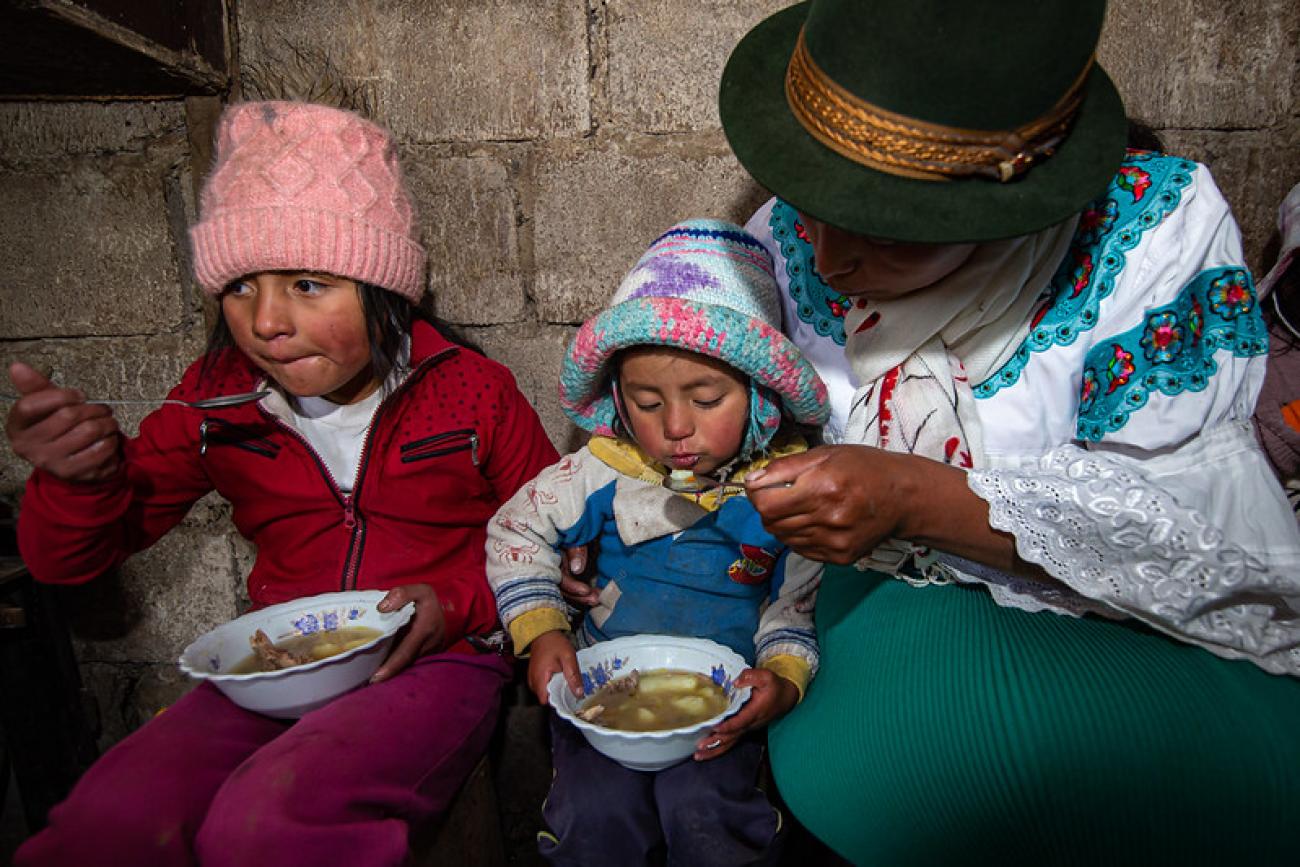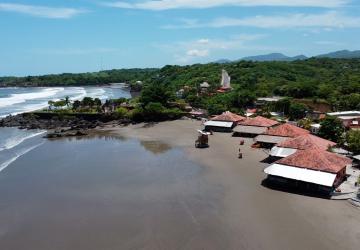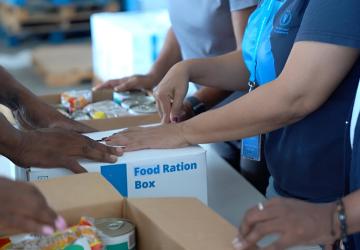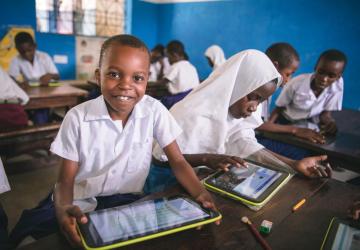What is an INFF and how is it helping tackle child malnutrition in Ecuador?

Over the past two years, the UN country team in Ecuador has supported the Government begin the process of creating the first Integrated National Financing Framework (INFF). Although the Framework aims to help achieve the Sustainable Development Goals more broadly, the first application targets chronic child malnutrition; one of the main issues affecting Ecuador.
To begin with, what is an INFF?
An INFF is a system that brings together different sources of financing for sustainable development in a country. Its goal is to help mobilize and align different financial flows with development priorities, ensuring it is effective and impactful. This brings together government, development partners, and other stakeholders to identify needs, develop financing strategies, and track progress towards the achievement of development goals.
So, why is it so important?
By providing common guidelines for public and private sectors, an INFF creates a conducive environment to accelerate the achievement of the 2030 Agenda for Sustainable Development. Its development and strengthening contribute to a more transparent and targeted financial architecture for sustainable development, promoting inclusive and sustainable economic growth, and upholding the principle of "Leaving No One Behind."
Financing with a purpose
With this in mind, our UN country team in Ecuador, led by UNDP, UNICEF and WFP and with support from the Joint SDG Fund implemented a project in January 2021 which focused on developing an INFF and applying it to combat chronic child malnutrition.
The prevalence of chronic childhood malnutrition in Ecuador is the second highest in Latin America, limiting learning capacities among children and increasing their likelihood of contracting diseases. Among children under 5 years old, chronic malnutrition affects one in every four children, and among indigenous communities, this figure rises to two in every five. This has strong implications for economic growth, poverty, and inequality. Critically however, efforts to tackle chronic childhood malnutrition remain under-funded. According to data from the national authorities, the funding gap for 2023 stands at $ 98 million.
This project, which was carried out over the past two years, with the Ministry of Economy and Finance and the Planning Secretariat, and subsequently with two local governments (Taisha and Alausi) has made significant progress.
Together we supported the Ecuadorian state take its first steps towards creating an INFF; thereby strengthening capacities to align national and local planning with the SDGs, as well as to prioritize policies with greater multiplier effects on sustainable development.
By combining the resources and expertise of three UN agencies, WFP, UNICEF and UNDP, we were able to deliver stronger and more coordinated support to the national authorities in laying the groundwork for its INFF.
So, what did this entail?
First and foremost, we provided technical assistance to the Government to help align the national budget towards the SDGs and integrate it with national planning; enabling the authorities to estimate financing gaps for priority policies including combatting childhood malnutrition and, identify alternative financing solutions.
Building off this support, the Government designed an INFF coordination mechanism between the Ministry of Finance and the Planning Secretariat to work more closely on issues relating to development funding, identifying what the priorities are and how much it would cost to tackle them.
Several financing tools have already been validated by government partners and will be incorporated at the institutional level, including a proposed tool to mobilize and align public and private resources to finance the Chronic Childhood Malnutrition reduction strategy.
This support has been greatly appreciated by the national government. In the project’s closing ceremony in December 2022, Vice-President Alfredo Borrero recognized the importance of this joint initiative and emphasized the need for a long-term collaboration among involved stakeholders. The Vice-President noted that the initiative is already helping consolidate action and support of the international community to strengthen the management of financing for development in Ecuador.
What is the work ahead?
By developing new tools, methodologies and coordination mechanisms, the joint initiative has helped lay the groundwork for the Government of Ecuador create its first INFF, setting up for its final development and approval. Yet there is much work left to be done.
By learning lessons from the first two years of this INFF journey the UN in Ecuador plans to replicate the initiative in other areas with a high prevalence of CCM as well as continuing to support the Government’s efforts to tackle other obstacles hindering its progress towards the Sustainable Development Goals.
This blog was written by UN Resident Coordinator in Ecuador Lena Savelli. To learn more about the work of the UN in Ecuador, visit Ecuador.un.org











